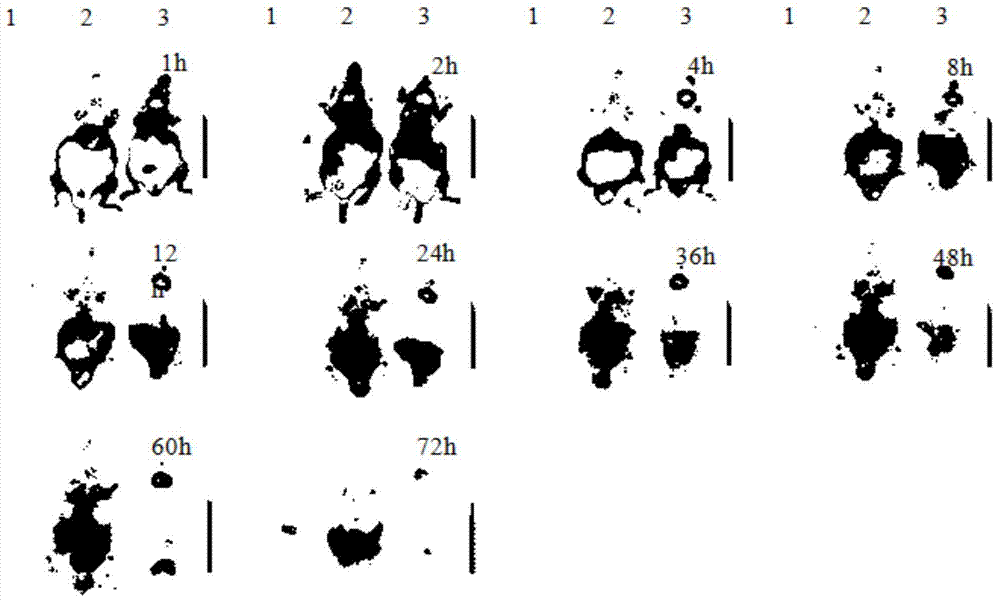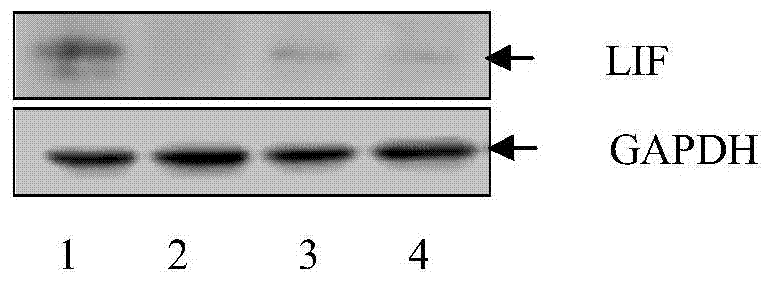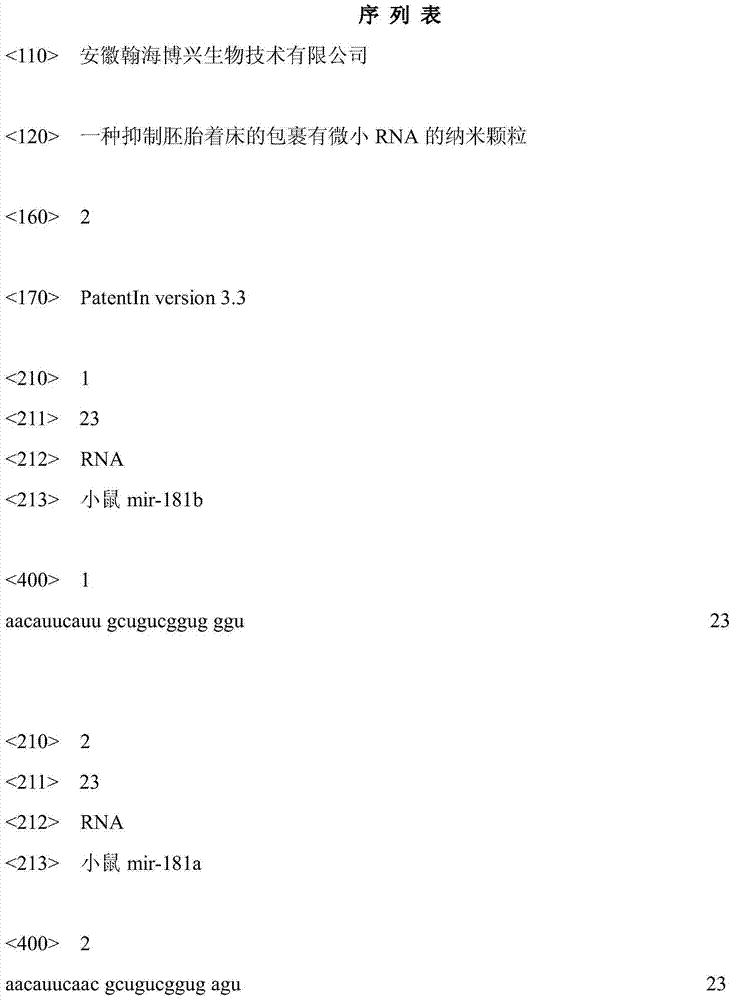Nano-particle wrapped with small RNA (Ribose Nucleic Acid) for inhibiting embryo implantation
A nanoparticle and tiny technology, applied in the field of molecular cytology, can solve the problems of increased risk of thrombosis and undiscovered miRNA, and achieves the effect of simple preparation method, obvious contraceptive effect and good stability
- Summary
- Abstract
- Description
- Claims
- Application Information
AI Technical Summary
Problems solved by technology
Method used
Image
Examples
Embodiment 1
[0018] Example 1 Nanomaterial polyethylene glycol-polylactic acid encapsulated small molecule mir-181
[0019] PEG 5000- PLA 25000 Dissolve BHEM-Chol in 0.5mL chloroform, add the miRNA solution, and form an initial emulsion under ultrasonication with a probe-type ultrasonic breaker (output power 80 watts, ultrasonication at a frequency of 10 seconds and 2 seconds for 2 minutes), and add the initial emulsion to into 1.5mL of 1% (w / v) polyvinyl alcohol aqueous solution, and ultrasonically (same as above) emulsified again, the emulsion was added to 25mL of 0.3% (w / v) PVA aqueous solution, the organic solvent was evaporated under reduced pressure, centrifuged, The nanoparticles were collected, resuspended twice with ultrapure water, washed by centrifugation, and the collected samples were freeze-dried.
[0020] The hydrophilic segment PEG of polyethylene glycol-polylactic acid copolymer can improve the compatibility and dispersion of the carrier and the drug, and the hydrophobic...
Embodiment 2
[0022] Example 2 Stability monitoring of nanoparticle miRNA
[0023] After injecting miRNA into mice by intraperitoneal injection, anesthesia gas was used to keep mice under anesthesia during the detection process, and a small animal in vivo imager was used to observe the fluorescence intensity in mice to monitor the stability of miRNA. The red fluorescent marker cy5 is bound to the miRNA used, and the fluorescence intensity directly reflects the stability of the miRNA. Once the small RNA is degraded, the fluorescence of cy5 disappears; in a large number of experiments, we have confirmed that the activity is basically the same as not being degraded. like figure 1 As shown, the real-time monitoring of the stability of miRNA over time shows that miRNA encapsulated by nanomaterials can exist in vivo for more than 72 hours, indicating that nanomaterial encapsulation can significantly delay the degradation rate of miRNA in vivo.
Embodiment 3
[0024] Inhibitory effect of embodiment 3mir-181a and mir-181b on embryo implantation
[0025] The mice were injected with negative RNA, mir-181a or mir-181b particles wrapped in nanomaterials on the 2nd day of pregnancy, and injected from the intraperitoneal cavity for 3 days, once a day (to achieve the highest level of miRNA maintenance in the body), each injection The amount of the drug is 1-2OD, the injection concentration is 5μM, and the injection volume is 500μL. Then, the number of embryos in the mouse uterus was detected at the 7th day of pregnancy, and it was found that the embryos could not implant and form embryos after injection of mir-181a and mir-181b, indicating that mir-181a and mir-181b encapsulated by nanoparticles can significantly inhibit Embryo implantation.
PUM
| Property | Measurement | Unit |
|---|---|---|
| Diameter | aaaaa | aaaaa |
Abstract
Description
Claims
Application Information
 Login to View More
Login to View More - R&D
- Intellectual Property
- Life Sciences
- Materials
- Tech Scout
- Unparalleled Data Quality
- Higher Quality Content
- 60% Fewer Hallucinations
Browse by: Latest US Patents, China's latest patents, Technical Efficacy Thesaurus, Application Domain, Technology Topic, Popular Technical Reports.
© 2025 PatSnap. All rights reserved.Legal|Privacy policy|Modern Slavery Act Transparency Statement|Sitemap|About US| Contact US: help@patsnap.com



